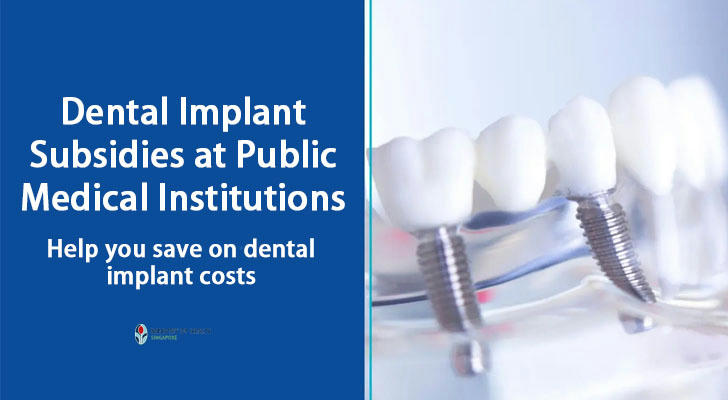Dental Implant Subsidy Scheme at Public Healthcare Institutions in Singapore: Government Support to Help You Save on Surgery Costs 🦷💸
💡Did you know? Faced with challenges such as long-term strained resources in the Singapore healthcare system and high cost of dental implant surgery that is unaffordable for most citizens, the Singapore government has launched the Dental Implant Subsidy Scheme, which aims to help citizens, especially the elderly, afford expensive dental implant surgery. The program targets different age groups and encourages the public to choose public health care providers that meet the specifications, so that everyone can enjoy affordable and high-quality oral treatment, providing the best coverage option for dental care after retirement.

1. What is the Government Dental Implant Subsidy Scheme?
The Singapore government has introduced a Dental Implant Subsidy Scheme to help patients who face financial difficulties manage the high costs of dental implant procedures. Through public healthcare institutions, patients can receive government funding, significantly reducing out-of-pocket expenses and making high-quality dental care more accessible. The scheme aims to improve overall public health, offering an affordable treatment option for those in need of dental implants.
2. Benefits of the Government Subsidy Scheme
Reduces financial burden 💰: Dental implant procedures can be costly. Government subsidies help lower patients’ expenses, making treatment more affordable—especially for low-income families.
Ensures treatment quality 🌟: Subsidised dental implant procedures maintain high standards. Through public healthcare institutions, patients receive professional care and advanced medical technology, ensuring a high success rate.
Fair and transparent subsidy criteria ⚖️: Subsidies are assessed based on patients’ financial circumstances, ensuring fair distribution and support for those who need it most.
Comprehensive care 🦷: The subsidy covers not only the surgery but also follow-up treatment and aftercare, ensuring ongoing support for patients’ oral health.
3. Which Implants Are Eligible for Subsidy?
Implants listed on the Implant Subsidy List (ISL) are eligible for direct subsidies. ✅
4. Can I Use Implants Not Listed on the ISL?
Unlisted implants generally fall into two categories:
Implants not yet transitioned to the ISL
Patients using these implants may still qualify for subsidies under the “Capped Implant Subsidy Framework”:
Singapore Citizens 🇸🇬: Up to 50%, capped at SGD 1,000
Permanent Residents 🏠: Up to 25%, capped at SGD 500
Implants assessed as lacking clinical or cost-effectiveness
- Patients may use implants not on the ISL, but this is generally discouraged. Implants with lower clinical efficacy or cost-effectiveness do not receive subsidies, so patients may have to pay more. Patients can contact their public healthcare institution for guidance on ISL-listed subsidised implants.
5. Who Can Receive the Subsidy?
The scheme mainly targets:
Singapore Citizens and Permanent Residents 🇸🇬🏡: Automatically eligible for subsidies when treated at public healthcare institutions.
Patients with financial difficulties 💡: Subsidy amounts are assessed based on household income, with higher support for low-income individuals and families.
Clinically eligible patients 🩺: Only those with a medically justified need for dental implants can receive subsidies.
6. Who Benefits Most from This Scheme?
| Age Group | Suitable Beneficiaries |
|---|---|
| 18–30 | Young adults needing initial dental restoration, especially those with financial constraints |
| 31–45 | Middle-aged adults with heavier family responsibilities, particularly parents 👨👩👧👦 |
| 46–60 | Individuals beginning to experience dental wear or loss, facing financial pressures |
| 60+ | Older adults, particularly those with low income or without retirement savings 👵👴 |
This table provides a quick overview of the age groups that can benefit from the subsidy.
7. How to Apply for the Subsidy
Applying for the government dental implant subsidy is straightforward. Patients simply need to visit a public healthcare institution for a brief financial assessment, which usually includes basic information about household income and expenses. Eligible patients receive the subsidy automatically—no complicated application process is required. 📝
The Singapore government’s Dental Implant Subsidy Scheme helps ease the financial burden of treatment, especially for low-income patients, ensuring everyone has access to necessary dental care. Through the subsidy, patients can save thousands of Singapore dollars on surgery costs while receiving professional treatment and follow-up care. 💪💙
